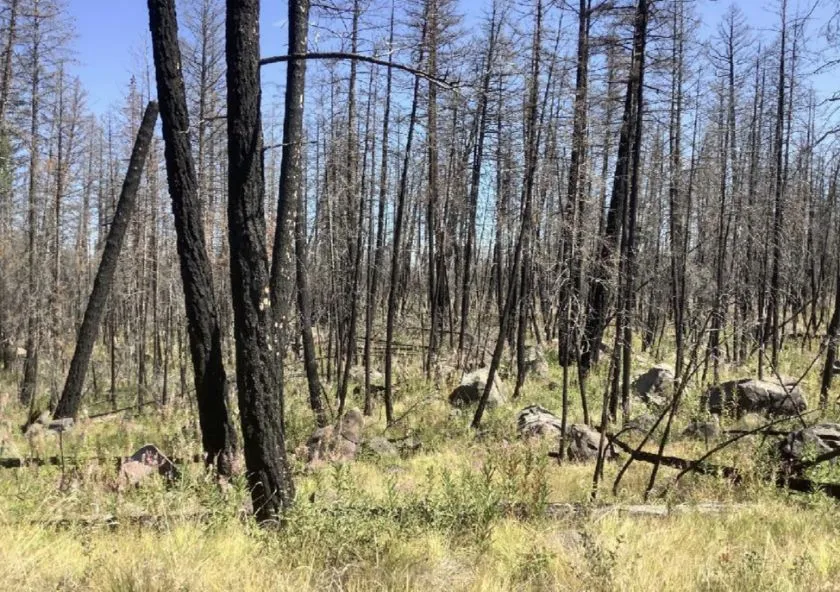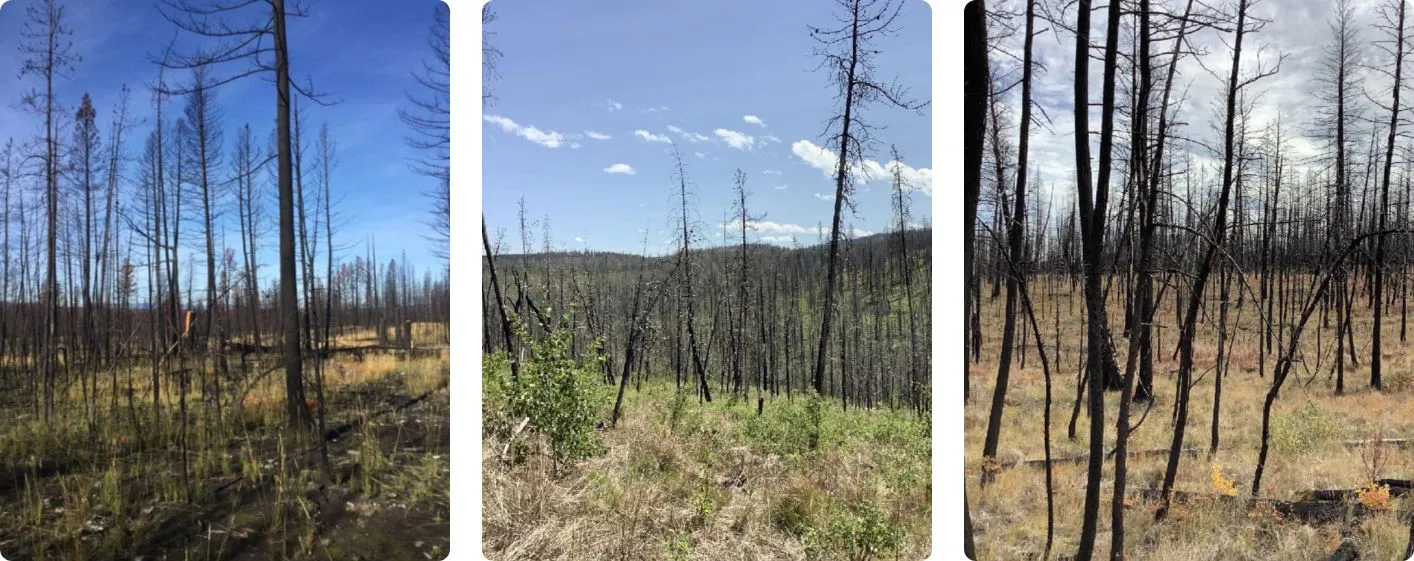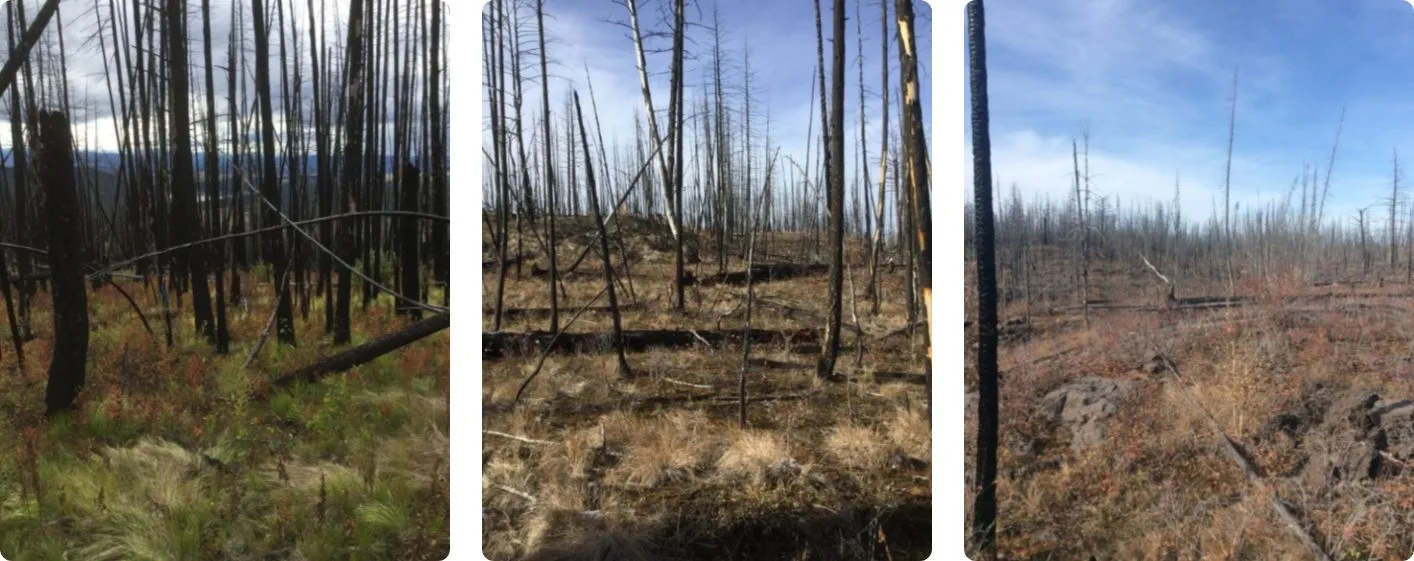Williams Lake Restoration Project
Location: Williams Lake, British Columbia, Canada

Project Description
This project will reforest areas that burned in the 2017 Hanceville wildfire. These lands were severely burned and are not expected to reforest naturally except in the very long term. The project contains general wildfire rehabilitation polygons and high priority Old Growth Management Areas (OGMAs). The planted trees will provide various habitat values, hydrological values, and sequestration of carbon from the atmosphere.
The regional Biodiversity Conservation Strategy Committee in the Cariboo Region identified areas within OGMAs that were considered a high priority for reforestation based on ecological features. Reforesting these areas is an opportunity to promote the re-establishment of representative ecological communities and biodiversity. These areas have unique reforestation standards to retain dead mature trees (no fiber removal), to maintain the existing natural structure of the site.
The standards aim to mimic natural regeneration by requiring the planting distribution to be clumpy, and by leaving natural voids when there is no suitable microsite. The restoration of areas in close proximity to wetlands has been prioritized within these areas. Reforesting these areas aids in the restoration of visual and thermal vegetation cover, which is essential for moose habitat.

Ecological Benefits
The Hanceville Fire in 2017 burned approximately 240,000 hectares (590,000 acres), most of it a stand-destroying fire. While some of the previous stands were lodgepole pine and are expected to regenerate themselves, the Douglas-fir stands are not. Douglas-fir needs live seed trees present to distribute seed, and in places there are no live seed trees for many kilometers. Without tree planting we believe this area would take many decades to grow back to forested conditions.
Planting will greatly speed the process of returning the area to a forested state. Newly planted trees will begin the process of sequestering atmospheric carbon, and over time improve the hydrological benefits of the forest. The ecosystems that have been greatly simplified by extreme fire conditions will once again become complex ecosystems capable of supporting a broad range of species and life forms.
We make efforts to maximize species diversity in our planting, including the following species: Douglas-fir, lodgepole pine, hybrid spruce, ponderosa pine, trembling aspen. A wide range of wildlife species, large and small, will benefit from this project. Large fauna include mule deer, moose, black and grizzly bear, wolves, sandhill cranes, various raptors, songbirds, small mammals and so on.
Deciduous seedlings are used in a number of situations, including providing shelter for frost intolerant species like Douglas-fir, planting in landscape fuel breaks to reduce the potential for wildfire to spread, providing species and ecological diversity at local and landscape levels.
Wildfire events commonly cause soil instability and erosion, due to the removal of the top litter layer. A severe fire can also alter soil physical properties, making them more susceptible to erosion and landslides. Reforesting fire-impacted areas stabilizes soil through root development and reducing the impact of heavy rainfall.
Mule Deer Winter Range (MDWR) areas identified by the regional Biodiversity Conservation Strategy Committee are proposed for reforestation in 2022. Reforesting MDWR areas is a high priority as they provide critical winter habitat for mule deer. Douglas-fir stands provide snow interception, travel corridors and winter forage for mule deer.
Community Benefits
Wildfire decimated a vast area of forest that for various reasons will not regenerate itself in a reasonable time period. The fire impacted the forest, but also soils, riparian ecosystems, wildlife and water quality. Local indigenous communities have seen their ability to hunt and gather food drastically altered. Ranchers not only lost cattle in the fires, but now see the grazing potential reduced where the forest and grasslands burned. The goal of planting is to establish a forest in less time that it would take if left for natural regeneration to occur. Natural regeneration is expected to take up to 40 years because of the lack of seed trees available. A further goal is to establish tree species that will be resilient in the face of climate change.

Tree Species
Douglas- fir (Pseudotsuga menziesii)Lodgepole pine (Pinus contorta)
Ponderosa pine (Pinus ponderosa)
Hybrid spruce (Picea glauca x engelmannii)
Trembling aspen (Populus tremuloides)
Western larch (Larix occidentalis)
 United States
United States